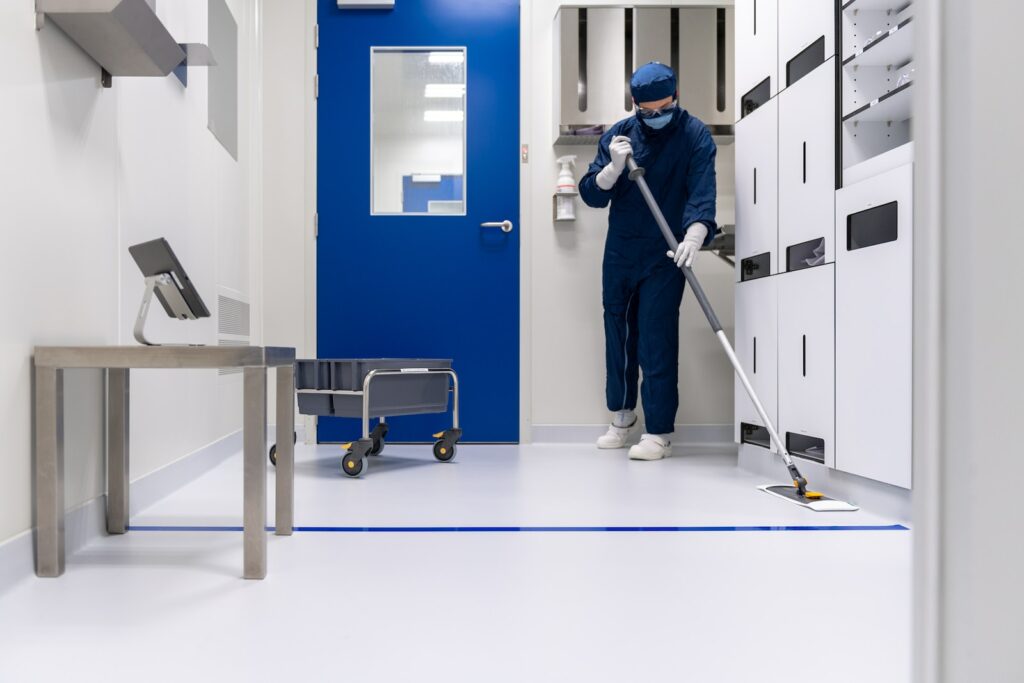Every laboratory has its own standards and protocols regarding the cleanliness of the workspace. These general practices differ depending on the laboratory’s work, but they will usually follow some similar guidelines. ICE Cleaning Services offer laboratory cleaning solutions where its technicians work closely with biopharmaceutical and medical suppliers. They conduct deep cleaning procedures with the highest possible quality and adhere to strict safety guidelines throughout.
Read on to learn more about the types of lab cleaning.
What does laboratory cleaning consist of?
Most laboratories have a strict cleaning schedule that uses a ‘clean-as-you-go’ approach to ensure high-quality hygiene throughout the day. A laboratory may also have a deep clean on a regular basis, either bi-monthly or annually.
Deep cleaning procedures are more thorough than general daily duties, utilizing specific neutralizing cleaning solutions. This process will include decontaminating all surfaces, tools, and protective equipment.
What types of lab cleaning are there?
General Cleaning
Tasks in a general cleaning schedule consist of wiping surfaces, hoovering, mopping, and brushing. Sensitive equipment or high-hazard areas are disinfected carefully with neutralizing solutions.
Chemical Cleaning
Disinfection procedures will kill or remove microorganisms on all surfaces. These solutions employ ethanol, hydrogen peroxide, and ammonium compounds to achieve this. Some tasks may require high-temperature steam under pressure to sterilize tools.
Glassware Cleaning
All glassware is soaked in detergent solutions and rinsed of any remaining residues and contaminants. Any equipment that uses acids requires a more thorough cleaning, some needing extra care due to corrosive substances.
Equipment Cleaning
Once disassembling equipment, they are decontaminated and deep-cleaned to ensure they are free of chemical or biological contaminants. Upon completion, they are reassembled for their next use.
Biosafety Cabinet Cleaning
Laboratories using biosafety cabinets to conduct their work will need to clean these often, using specific disinfectants to kill bacteria inside.
Fume Hood Cleaning
Filters must be changed out after long use to prevent the dangers of poor airflow, and then the surfaces of the fume hood require cleaning.
Hazardous Waste Disposal
Emptying, disinfecting, and preparing all waste disposal bins for further use is integral to a laboratory’s safety. Keeping these areas clear of waste protects everyone from trip hazards or infection.
Personal Protective Equipment (PPE) Cleaning
Laboratories that use PPE are required to either dispose of or clean some clothing and gear. Gloves and masks may need to be disposed of, whilst lab coats need cleaning to remove contaminants before reuse.
Can professional cleaners conduct lab cleaning procedures?
Laboratories might have their own cleaning staff that conducts deep-cleaning procedures, but outsourcing your cleaning needs may be safer and more thorough. By hiring professional cleaners, you can relieve the burden of cleaning from your staff and improve morale.
New Report: 1 in 4 Have Found a Camera at a Vacation Rental(Opens in a new browser tab)
Laboratory cleaning is just one of the many industrial cleaning methods that ICE Cleaning Services offers. Its expert cleaners work within your laboratory’s strict guidelines, enforcing safety and high-quality cleaning methods for you and your team.
To learn more about its services, you can visit its website today and get in touch.
